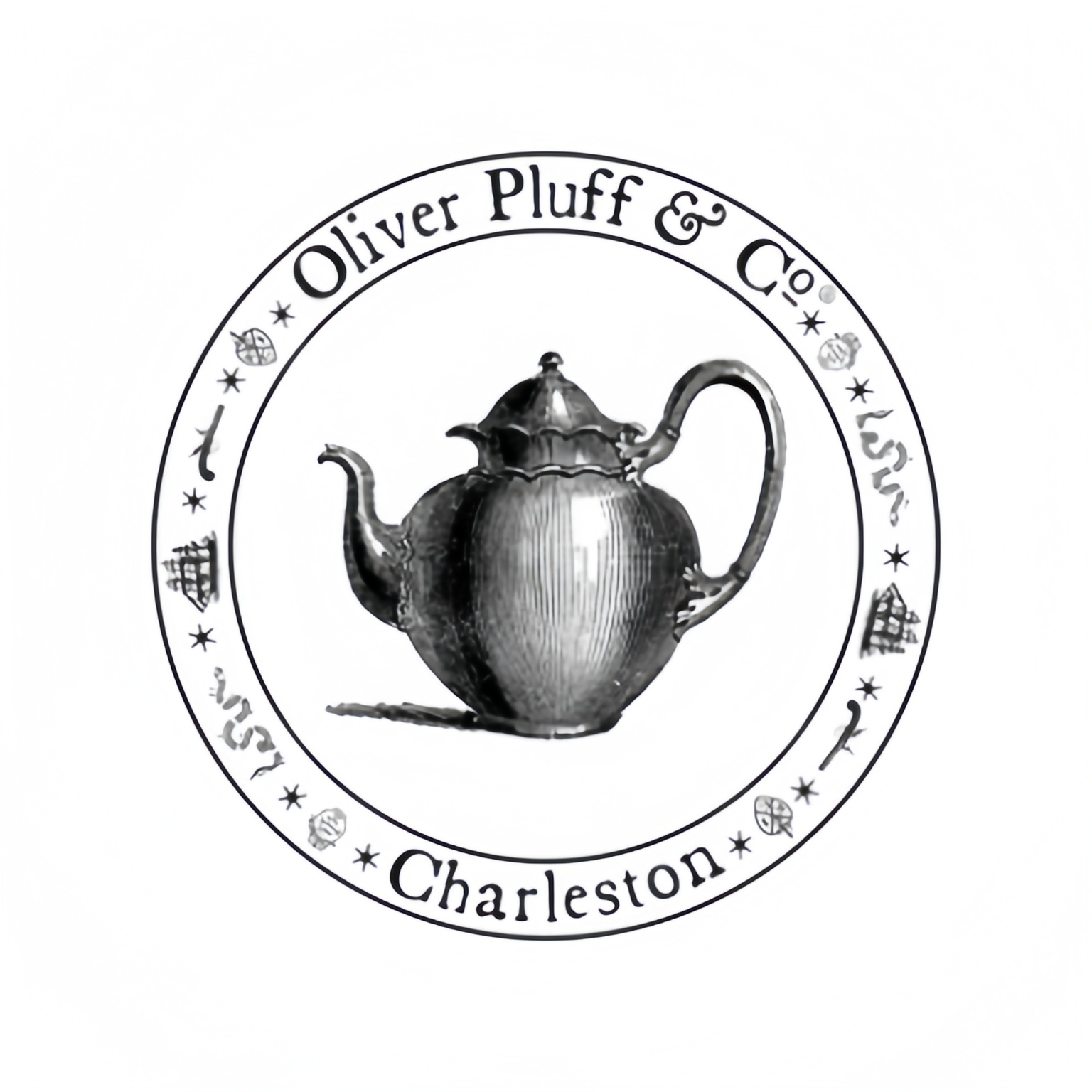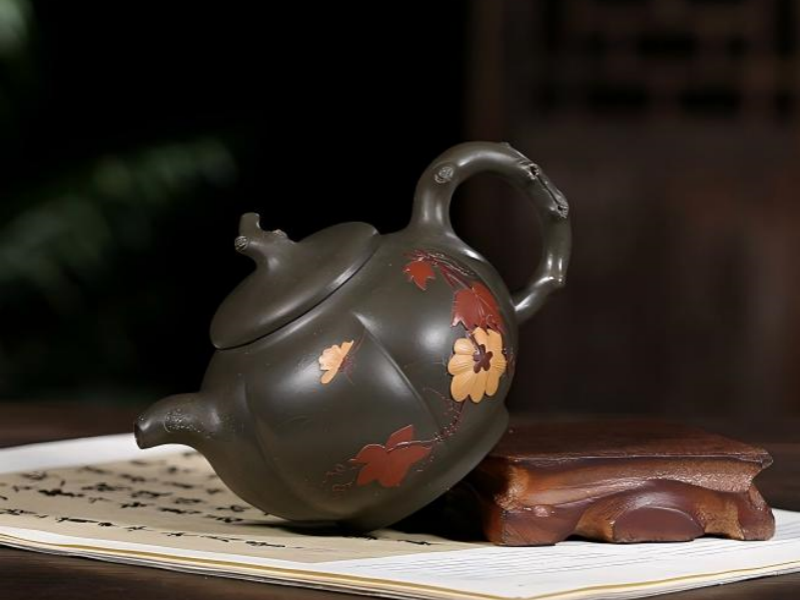Yixing ware teapots: Moon Palace—Timeless elegance for tea lovers
Welcome to the world of Moon Palace Yixing teapots, an exquisite piece of traditional Chinese craftsmanship created for the cultured tea drinker. This beautiful example of Yixing ware teapots employs centuries-old craftsmanship and beautiful design to produce not just a pot, but an accompaniment to your tea-drinking life.
Application Scenarios Expansion
What industries-apply-to?
The Moon Palace Yixing teapot is used in the following professional and lifestyle contexts:
Tea Houses & Specialty Cafés: Professional tea houses rely on authentic Yixing teapots because of their efficacy in brewing and their ability to highlight different flavor notes in various teas. These teapots are especially suited to brewing Chinese oolongs and pu-erh varieties.
Hospitality Industry: We often see luxury hotels and high-end restaurants incorporate Yixing teapots into their tea service to provide guests with an authentic cultural experience. This use illustrates that using Yixing teapots is an attention to detail that reflects a respect for tradition.
Cultural Institutions: Museums, cultural centers, and educational facilities own Yixing teapots, e.g. Moon Palace, for demonstration, exhibitions and related workshops to support raising awareness of traditional Chinese tea ceremonies.
Wellness and Mindfulness Practices: Meditation centers, spa retreats and mindfulness practitioners will use Yixing teapots for ceremonial tea preparation, which facilitate mindfulness and presence.
Interior Design: Decorators are choosing Yixing teapots as working art objects to help provide personality and genre to an interior.

What Common Problems Can Be Solved?
The Moon Palace Yixing teapot solves many problems home brewers encounter:
Flavor dilution: Glass teapots & ceramic & steel teapots don’t add any flavor to your brew. The porous Yixing clay, on the other hand, absorbs gist of the brews in it, cleverly modulating the flavor with each successive brew.
Temperature Control: Unlike any other materials, the dense clay material of the Moon Palace teapot results in excellent heat retention that retains consistent brewing temperature during steeping.
Over-Extraction: The Moon Palace’s precision pouring spout enables clean, controlled pouring, which avoids dripping and any unwanted over-steeping of your treasured teas.
Authenticity of tea ceremony: For those practicing Gongfu Cha (Chinese tea ceremony), there is a cultural expectation that, in order to properly access the cultural experience of the the ceremony, a Yixing teapot is necessary. The use of an authentic Yixing teapot thus becomes an essential part of
Sustainability Issues: Whereas teabags are not reusable and plastic teawares do not gain in value as a material over time, a Yixing teapot is a one-time purchase that only gains in value to the user over time and develops value through use and history of ownership, making it a very green purchase.

FAQ
Proper seasoning of your new Yixing teapot is essential. First rinse the teapot thoroughly with filtered water (no soap). Then fill a large pot with enough water to completely submerge the teapot and lid, add tea leaves of the type you will be brewing most often (approximately 10-15% of the volume of the pot), and gently simmer for 30-45 minutes. Allow the teapot to cool naturally in the tea water, then remove and rinse with clean water. Dry completely before first use. This prepares the teapot by opening up the clay’s pores and starting the process of saturation with the flavor of the teas of your choice.
Tradition holds that Yixing teapots are dedicated to one type of tea alone, if not specific teas within a family (i.e. different oolongs), as the porous nature of the unglazed clay allows for oils and mineral compounds from the tea to be absorbed into the clay throughout time. Moon Palace’s clay composition is especially well-suited for darker oolongs and pu-erh teas, but feel free to dedicate your Yixing as you like. Dedicating your teapot will allow your Yixing to form a rich patina specific to that tea and provide enhanced brewing qualities tailored to that preparation.
The Moon Palace teapot has been produced in a traditional small format (ca 150 – 200 ml capacity) ideally suited for Gongfu style tea brewing. This size lends itself to multiple short infusions of the same leaves, and is smaller than a Western-style teapot for this very reason. Each steep reveals different notes in the flavour profile and the size of the teapot, along with the amount of leaf used, has a direct bearing on this extraction. The Moon Palace teapot’s design allows the brewer to easily achieve the correct proportionality (liquor volume against leaf) to bring out the flavours without bitterness or astringency.
What is necessary is only rinsing your Moon Palace teapot with clean, hot water after each use. Never wash with soap or detergents, or use abrasive materials to clean the pot. Soap and detergents will seep into the clay and get into your tea, while abrasive materials will damage the clay and its flavor-building properties. Let the pot dry completely with the lid off before storing. Occasionally, you may want to very gently brush the outside of the pot with a soft brush to keep it looking its best. Over time, you will notice a patina developing as the pot absorbs tea oils. This is very desirable, and a part of the aging process that makes each Yixing teapot special to its owner.
Every Moon Palace teapot is made by a master potter using traditional handcrafting techniques that have been preserved through generations in Yixing, China. Compared to the mass produced teapots made using molds and machinery, each Moon Palace teapot involves hand-forming, carving and firing processes carried out with utmost care and attention to detail. Every Moon Palace teapot is unique and may have subtle differences that are the result of handcraft rather than being flaws. Besides practicality, each teapot is signed by the potter and considered a collectable work of art.
Yixing clay (Zisha) is unique in several ways: it has unparalleled porosity that causes the teapot to ‘breath’ while it retains heat; the same porosity also interacts positively with various organic compounds present in tea through naturally-occurring minerals in the clay, finally it has extremely low thermal conductivity that keeps your hands safe while the tea remains warm. The composition of the specific clay used for the Moon Palace teapot has been chosen for a balanced expression of all the above characteristics. The clay has gone through minimal refinement to maintain its original nature. In all of these ways, Yixing clay is fundamentally different to industrially refined ceramics, porcelain or glass.
Beyond its practicalities, the Moon Palace teapot makes tea preparation a meditative ritual. Its ergonomic design helps you pour your tea accurately, and its clay not only imparts hard-to-describe qualities to your tea, it also adds an auditory facet to your tea preparation that evolves over the years you brew with it. Lastly, the moon’s aesthetic grace evokes the probable origin of Yixing teapots in the Tang Dynasty, leading the Moon Palace teapot to become an intrinsic meditative device that rewards anew every time it’s handled. Many who use seasoned Yixing pots claim that the same tea brewed in their prized pot tastes deeper and has a smoother mouthfeel, rounder aromatic notes, and more complexity than it normally would brewed in another vessel.
Master Yixing teapots like the Moon Palace tend to appreciate over time with continued use and proper care. The classic craftsmanship, small production quantity, and aging qualities of the clay make them highly collectible. Many teapot enthusiasts have high value collections they pass down to their descendants. We think the greater value is probably the daily enjoyment and the relationship that you develop with your teapot after years of use. The Moon Palace teapot is designed to be a functional tool as well as a heirloom quality work of art.
Selection/Comparison Suggestions
There are numerous factors to consider when choosing a teapot for preparing Chinese tea. The following comparison may help to demonstrate the differences between the Moon Palace Yixing teapot and some of the other options:
Comparison Table: Teapot Materials for Chinese Tea Preparation
| Feature |
Moon Palace Yixing (Zisha) |
Porcelain |
Glass |
Ceramic |
Jianshui Purple Clay |
| Heat Retention |
Excellent (4-5 min) |
Good (2-3 min) |
Poor (1-2 min) |
Good (2-3 min) |
Very Good (3-4 min) |
| Flavor Neutrality |
Enhances over time |
Completely neutral |
Completely neutral |
Varies by glaze |
Enhances over time |
| Porosity |
High (beneficial) |
None |
None |
Low to None |
Medium-High |
| Thermal Shock Resistance |
Very High |
Medium |
Medium |
Medium |
High |
| Lifespan with Proper Care |
100+ years |
10-20 years |
5-10 years |
10-15 years |
50-100 years |
| Effect on Tea Chemistry |
Enriches minerals, reduces astringency |
Neutral effect |
Neutral effect |
Minimal effect |
Similar to Yixing but varies |
| Geographic Origin Authenticity |
Yixing, Jiangsu, China (PGI protected) |
Various |
Various |
Various |
Jianshui, Yunnan, China |
| Price Range (Artisan Quality) |
$80-$500+ |
$30-$200 |
$20-$100 |
$30-$150 |
$60-$400 |
Data Source: Based on PGI (Protected Geographical Indication) standards for Yixing clay products and ISO 3103:2019 (Tea preparation standards). For detailed information on Yixing clay geographical protection, visit: Jiangsu Provincial Government Official Geographic Indication Registry
Choosing Between Different Yixing Teapots
There are a number of considerations when choosing between different Yixing teapots:
Clay Type: The Moon Palace is made from high grade zhuni (red clay), a fine-textured clay that retains heat well, making it suitable for oolong and black teas. It contrasts with duanni (yellow clay), which is most suitable for green teas, or zini (purple clay), which performs exceptionally well with pu-erh teas.
Pot Shape: The Moon Palace’s round body helps concentrate heat and provides lots of room for leaves to stretch out more so than other shapes. Ideal for ball-rolled oolongs. Flat pots will typically better for compressed teas while tall pots will better for straight-leaf teas.
Pour Speed: The Moon Palace has a carefully engineered spout that allows for a steady 5-7 second empty time, optimal for regulating steep times of complex oolongs. Depending on your primary tea type, either faster or slower pour rates may be preferred.
Capacity: At 150ml on the dot, this Moon Palace tea pot sits squarely in the 2-4 person Gongfu tea zone. For more precious or costly teas, a smaller tea pot of 60-100ml can be preferable, especially for solo drinking. For larger group sessions, a 200ml+ tea pot is more appropriate.

The craftsmanship level is mid to high level of Moon Palace series, there are also hand crafted lower entry level pots where you can see less of the refinements in detailing, also master level where lot of artistic value are added by hand and command much higher prices. Artist signature number серии Artist signature number series
Actual Cases / Customer Stories
The Teahouse Proprietress
James Chen, who runs “East Meets West Tea House” in San Francisco, introduced the Moon Palace teapot to his business’s high-end tea service three years ago. “When people order one of our aged oolong or premium pu-erh offerings, we pour it in the Moon Palace teapot. It manages to keep the temperature throughout several steepings, and the clay interacting with the tea has definitely boosted the complexity of flavors over the time we’ve been using it. It’s become such a conversation piece that we now hold a monthly Yixing teaware workshop where we spotlight the Moon Palace as our demonstration of traditional design.”
The Collector’s Tale
Dr. Amelia Watkins, professor of East Asian Studies and teaware collector, says “I bought my Moon Palace teapot on a research trip to China five years ago. Its graceful shape first attracted me, and now I’ve seasoned it exclusively for Wuyi rock oolongs. The change has been amazing, both in the teapot’s evolving patina and in the tea itself. What struck me the most was how the teapot softened the mineral notes but highlighted the natural sweetness of these teas. I’ve bought a number of Yixing pots since then, but the Moon Palace remains my go-to example to show students how the choice of vessel influences the sensory experience.”
The Daily Ritual
Michael Tanaka, a software engineer in Seattle, incorporated the Moon Palace teapot into his daily morning routine as a mindfulness practice. “In our fast-paced digital world, my tea ritual with the Moon Palace has become my anchor to presence. There’s something profoundly centering about heating the water, warming the pot, and watching the leaves unfurl. After two years of daily use with the same Taiwanese oolong, the pot has developed a beautiful shine, and the tea has a roundness that I never experienced brewing it other ways. What started as a purchase has become a relationship—I can feel the history of every cup in its walls.”
The Gift That Transformed a Relationship
Sarah and David Goldstein received a Moon Palace teapot as a wedding gift from friends who knew of their shared interest in tea exploration. “Neither of us had used a real Yixing pot before, and honestly, it sat on our shelf for months as we were intimidated about ‘using it wrong,'” Sarah explains. “When we finally researched proper usage and seasoned it, it transformed our weekend mornings. We now have a shared ritual of preparing and enjoying tea together that’s become our special time to connect without distractions. Four years later, our Moon Palace teapot has developed a beautiful patina and brews the most incredible Da Hong Pao oolong. We often joke that it’s the best relationship counseling we’ve ever had!”
The Ursatic Tea Educator
Lisa Wong, a certified tea educator who presents workshops nationwide, takes her Moon Palace teapot with her to all her presentations. She explains, “I have not found a more compelling way to illustrate how the material of the teaware affects flavor than to brew the same tea in vessels side by side. When people taste the tea from the Moon Palace vs. porcelain or glass, the contrast is stark, even to beginners. The interaction of the clay creates a supple smoothness and complexity, which perfectly conveys why these ancient practices have endured for ages. My Moon Palace has traveled with me to 28 states now, and the slight differences in water minerals content across the country have contributed to its unique development. It has become not only a teaching aid but an archive record of the journey of my teaching.”
Conclusion
The Moon Palace Yixing teapot is not just a pot; it is a link to hundreds of years of tea culture, a work of art which becomes more beautiful and valuable the more it is used, and a daily companion to your tea experience. It is a perfect choice for anyone from those who are just beginning to explore fine tea to those who are deeply immersed in it. The Moon Palace teapot synergizes authenticity in tradition with enjoyment in the present unique in the industry. With proper care, the Moon Palace teapot will serve you for a lifetime and can even be handed down to the next generation.
























Sierra Gray –
I love the weight of it. It feel very durable.
Yasmin Khan –
My tea tastes more complex?? there’s definitely something special going on this clay that you can’t get with regular ceramic teapots
Caleb Foster –
Perfect for any tea lover.
Hana Suzuki –
The Moon Palace theme adds such a graceful touch to my tea corner. Not to mention the functionality is superb for everyday brewing.
Tariq Green –
Best teapot purchase made!
Angie Fernandez –
I’ve been collecting teaware for years and have a few pieces in my collection, but this Yixing piece is absolutely amazing! Its heat retention and ability to infuse flavor is amazing!